‘Silk Road’ of Australian antiquity among First Nations discoveries
From ‘industrial scale’ mining to permanent settlements and an Indigenous Silk Road, eye-opening archaeological discoveries are changing what we know about how early Aborigines lived.
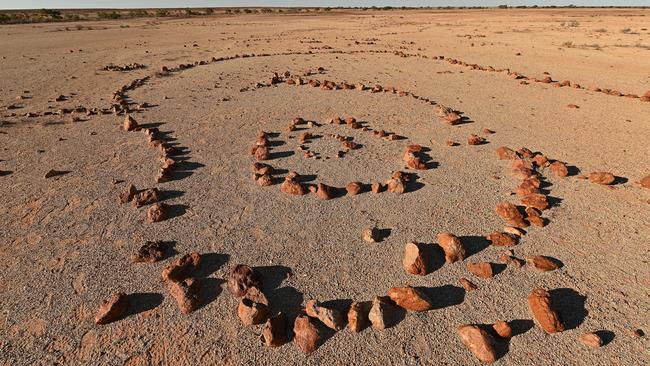
Michael Westaway is treading warily given the ground here is treacherous. For the past five years, the Brisbane-based archaeologist and his team have quietly been digging into the chameleonic Mithaka country of southwest Queensland, piecing together what life must have been like for the original settlers.
We’re talking of the very First Australians, not the graziers and colonial police who confronted and bloodily subjugated the Indigenous population during the second half of the 19th century in this far-flung corner of the continent.
Westaway’s findings are eye-opening and represent an important advance in our understanding of how Aborigines not only survived in an unyielding environment but thrived prior to contact.
The Mithaka people had lived simply in squat, igloo-like gunyahs, sometimes grouped in sizeable settlements, presiding over a vibrant trading system reaching from red-rock Flinders Ranges in South Australia to Top End savannahs lapped by the warm waters of the Gulf of Carpentaria.
They hunted and gathered the bounty of the bush, attuned to its ancient rhythms of boom and bust, feast or famine. At the same time, basic technology was developed to exploit the ephemeral days of plenty and endure long, unrelenting years of drought and want in a homeland four times the size of Tasmania, cut by great inland rivers and bordered by the Simpson Desert.
To cite just a few examples of what Westaway’s project has uncovered:
MINING on an “industrial scale” to quarry grindstones used to mill grass seeds and native grain, dating back more than 2000 years. More than 73,000 pits are estimated to be involved, dotted across fields so immense their scope can only be gauged from space through satellite imagery. Distinct “workshop” areas to finish the typically 6kg-7kg millstones – light enough to be carried by a person over long distances – have also been identified.
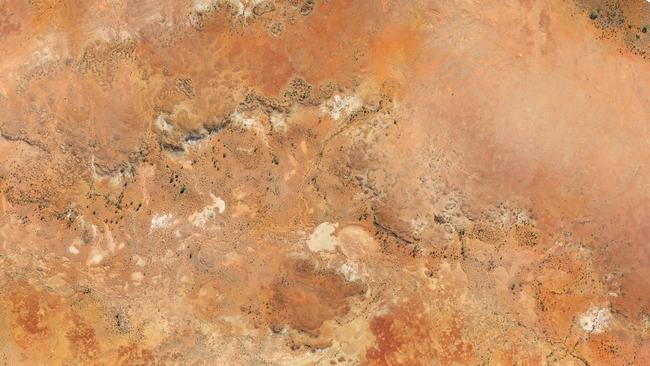
EVIDENCE of a thriving cross-continental market in native pituri – a narcotic prized for ceremonial use and as an everyday pick-me-up – harvested from natural groves deep in the desert and carried to distant destinations on human backs. The footsore traders wedged wads of nicotine-laced leaf into their cheeks or behind an ear to keep up the pace, and returned with rock axes from the arid Mount Isa region in northwest Queensland, and red ochre and razor-sharp stone knives from Arnhem Land.
TRACES of possibly permanent Aboriginal settlements bearing out an 1871 account of a 103-gunyah village at Thunderpurty Lagoon. “If food production was part of the Mithaka economy then the suggestion that villages were part of the ‘package’ … requires consideration,” Westaway wrote in a research paper published last year. “Although a number of the archaeological sites identified over the past 50 years fit the ‘village’ description … there persists a hesitancy among Australian researchers to accept village sites as part of the Australian archaeological record.”
Middle ground
If you detect in this an echo of Bruce Pascoe’s polemic Dark Emu you’d be partly right – and also utterly wrong to think that Westaway fully endorses Pascoe’s deeply-disputed contention that the traditional Aborigines had developed a way of life and accoutrements that looked a lot like those of the whitefella. The Queenslander calls himself a fence-sitter.
The study of the Mithaka sites, backed by a multidisciplinary group of 22 scientists mostly from the University of Queensland, is methodically building up a much more nuanced picture.
As chief investigator, Westaway is all too aware of the raging, seven-year row over Pascoe’s claims that pre-colonial Aborigines were agriculturalists who settled down to live in stone huts and raise crops – a case that was demolished by eminent social anthropologist Peter Sutton and archaeologist Keryn Walshe in their powerful 2021 book, Farmers or Hunter-Gatherers? The Dark Emu Debate.
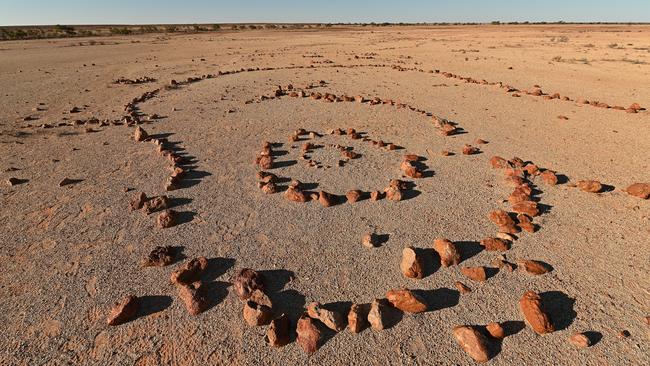
“I think there is some middle ground, which we are trying to explore,” the 51-year-old associate professor of archaeology at UQ tells Inquirer. “Archaeologists have recognised for some decades that while ethnographic accounts provide important insights into understanding the diversity of human innovation in history-prehistory, they are not necessarily a direct window to the past.
“The detailed ethnographies by Peter Sutton are largely of Aboriginal people living in the post-European contact period in marginal resource zones such as Cape York and the deserts of SA. These are the places of very little economic value to European pastoralists or those growing crops.
“I think the stories from Mithaka country, a landscape considered by many as Australia’s richest cattle country with its immense alluvial plains … is revolutionising our understanding of ancient food production systems across the world.

“The Aboriginal communities in economically valued land were devastated well before professional anthropologists could make their observations, so like Bruce Pascoe we do rely on the ethno-historic account from explorers, surveyors and pastoralists in the period where these two cultures became entangled, but we use these to develop a hypothesis that we can then test through methods such as archaeobotany and plant genetics.”
Elaborate rings of sacred stones still dot the roasting Mithaka flats, testament to the deep spirituality that infused every aspect of the old people’s lives. In 1845, the explorer Charles Sturt encountered “villages” humming with activity, his journals record; he saw grass seed being busily ground to produce “cake” and crude kangaroo-skin sacks bursting with native grains. By 1875, when most of what’s now known as the Channel Country had been parcelled up for grazing, the colonial press was reporting that the area’s “civilised Aborigines” provided for themselves through “cultivation and fishing”.
After sheep succumbed to the punishing conditions, the European pioneers turned to drought-resistant cattle, always with an eye to the heavens. Then, as now, the landscape bloomed when the rains came, fleetingly green and lush. In a big wet, the bone dry rivers erupted into churning torrents, the chocolatey water overflowing into a spider’s web of streams and wetlands before draining to faraway Kati Thanda-Lake Eyre. Any take from the Indigenous fish traps that was not immediately consumed was pounded into an edible powder and put away for the lean times.
The existence of north-south Indigenous trade routes tracing the courses of the fabled Diamantina, Barcoo, Thomson and Cooper rivers has long been established, overlaying a network of songlines or Dreaming tracks connecting sites of cultural significance. Westaway calls it the “silk road” of Australian antiquity.
But as we report in the news pages, the discovery near Bedourie, on the edge of the Simpson, of two Indigenous swords of rainforest wood raises the intriguing possibility that the trade corridors also had lateral offshoots to the coast. It’s the most logical explanation for how the artefacts – provisionally carbon-dated to the mid-1800s – turned up so far from where they were likely fashioned in the seaside strip between Mackay and Townsville, Westaway insists.
He plays down alternative scenarios. It’s unlikely, for example, that the 1m-plus swords were given up voluntarily to a European who brought them west; they were revered objects, used as much for ritual purposes as fighting, so rare that few have survived to be acquired by museums or private collectors, he says.
The swords ended up at the local roadhouse after being pulled out of a dry creek bed with a cache of 150-plus-year-old wooden relics including 12 boomerangs, a spear and coolamon container, all evidently preserved in the baked mud. Westaway says: “It doesn’t make sense to me that a European collector of wooden objects would discard them in a waterhole to be exposed some 20 years ago. The spear shaft has an 86 per cent chance that it predates 1860, and at least one of the 15 (artefacts) indicates it is earlier.
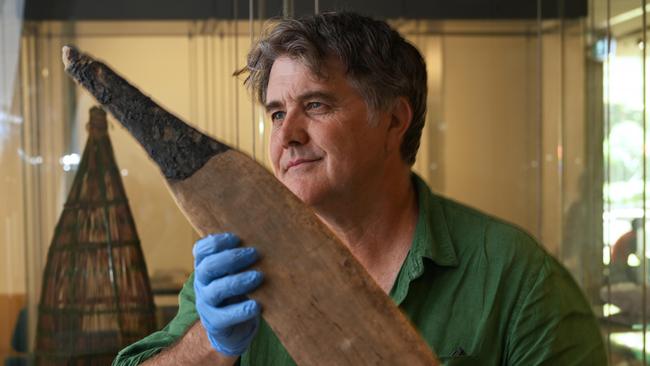
“And … I am just wondering, could have there been other links in this chain of connection that we were unaware of? I think our understanding of the complexity of these networks is probably limited.”
The evidence from the digs and archaeological surveys conducted to date certainly points to the Mithaka being at the centre of the action. Their adroit utilisation of pituri “formed the basis of a massive trade network that spanned half the continent,” Westaway says.
The shrubs that grow in the sand dunes west of the Mulligan River are especially potent, with a nicotine content double that of commercial tobacco, chemical analysis has shown. Remember, the Indigenous clans had no written language and the surviving contemporaneous record is largely drawn from the accounts of the European expeditioners and early settlers who observed a tightly-organised operation in this case: the gathered pituri leaf was dried, crammed into 25kg packs and hauled away by groups of up to 50 weighed-down men.
“That’s a lot of plant material being moved around,” says UQ ethnobotanist Jen Silcock, a member of the Mithaka team. “It was trade on an enormous scale.”
The grindstones quarried from sandstone were equally in demand. PhD student Doug Williams spent months in the field, increasingly astonished at the scale of the mining. The quarry at Morney Plains covered nearly 5sq km and would have produced hundreds if not thousands of grindstone blanks a year, far more than the local people could have used. The larger sites featured standing stones erected in rock-stubble walls.
“Taken together, these sandstone quarries approach a seemingly industrial scale of production, incorporating thousands of quarry pits and representing the manufacture of thousands of grindstones … indicating a process that likely generated a significant excess for redistribution through an extensive trade network,” the researchers reported this year.
This bore witness to a “thriving, industrious, organised and complex society,” they noted.
As with Dark Emu, Sutton cautions against conflating post-industrial European mores with traditional Aboriginal values; they’re worlds apart when the old ones’ abiding spirituality governed everything they did.
“The quarries were more or less religious sites,” he says. “These were not secular transactions … when we think of trade it’s ships from China carrying teacups and you have to establish a basic relationship and exchange means. But Aboriginal trade didn’t use a medium of exchange in that sense … under normal conditions it was a centre for maintaining peaceful social relationships.”
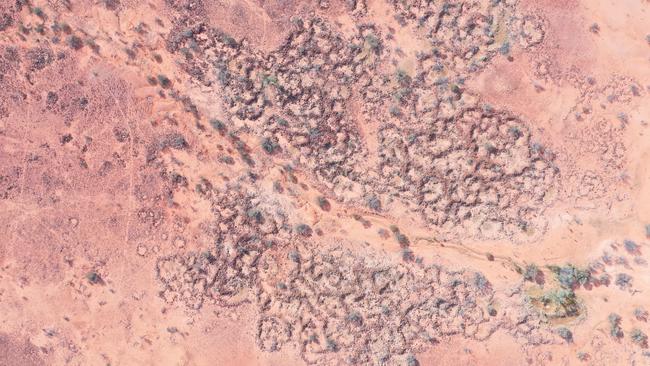
Having unearthed evidence that the villages of Mithaka did likely exist, the researchers want to understand their function. Were the settlements permanent or temporary, tied to where the dial set between boom and bust? The wood-framed gunyahs were sturdy enough for two weathered shells to have survived, another window into pre-colonial life.
Nathan Wright, of the University of New England, says the huts were dug into the ground and slept up to six adults. The single entrance was north-facing, sheltered from the prevailing winds, where an outdoor cooking fire would have burned. A survey of the Thunderpurty Lagoon site turned up numerous fragments of grindstone and grains, “consistent with extended occupation,” Westaway has written. Painstaking excavations, using fine 0.5mm meshing to sift the soil, yielded an abundance of edible seeds from grasses, nardoo fern and eucalypt trees. “Look, there’s an incredible amount we do not know about how Aboriginal people actually interacted with the landscape,” says Wright, a lecturer in archaeology.
“We don’t have a great understanding of how people procured and managed their food, especially in relation to these types of wild and very harsh environments.
“What types of decisions were they making in terms of staying in one place for a period of time, perhaps even permanently, or moving on? Which one of these things was happening out there with the Mithaka? Or was it something different?”
Complex stories
Fortified by an Australian Research Council grant, Westaway will work with marine archaeologists from the National Maritime Museum and Flinders University in an expanded project called Diving in the Desert, systematically checking waterholes, intermittent wetlands and sites of historical interest for signs of ancient human life with ground-penetrating radar.
Mithaka elders, on board with the project, have given permission for the testing of teeth retrieved from four sets of skeletal remains traced to the pre-contact period, a potentially breakthrough development. That’s because the distribution of residual strontium, an isotope that can be read like a GPS unit, should allow the scientists to peer back in time to map where the Aborigines went, adding structure to what’s known of the epic songline and trade channels.
Westaway is excited. “These are detailed, complex stories, almost like Homeric legends and they stretch right across the continent, going back thousands of years,” he says of the songlines.
“I just think we need to bring together a whole lot of disciplines to understand them because when we do … I think we will develop an entirely different story of the Aboriginal past and the complexity of those networks.”




To join the conversation, please log in. Don't have an account? Register
Join the conversation, you are commenting as Logout